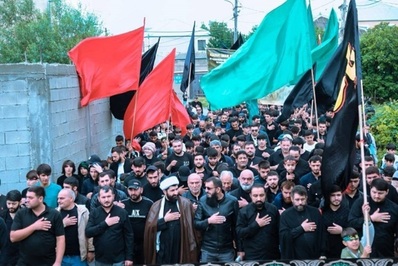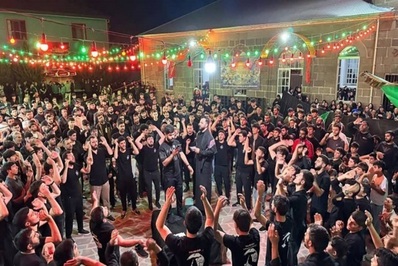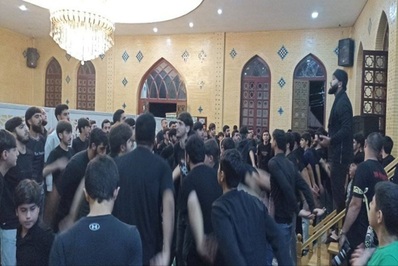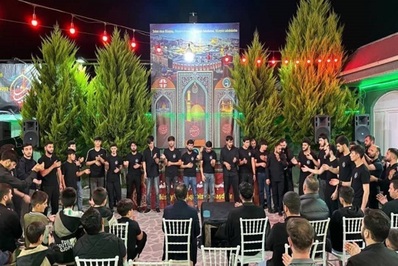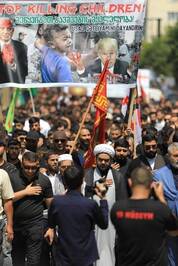Connection between Ashura, Resistance Front in Georgia’s Muharram Rituals
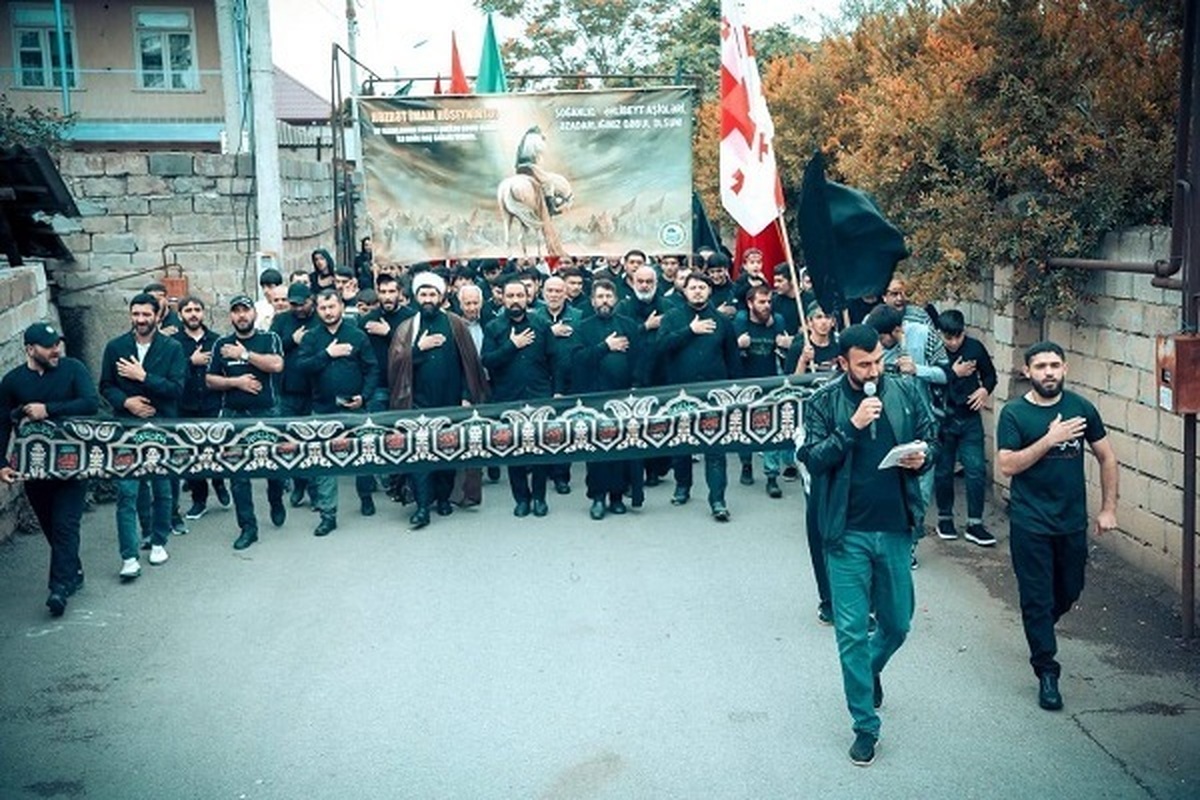
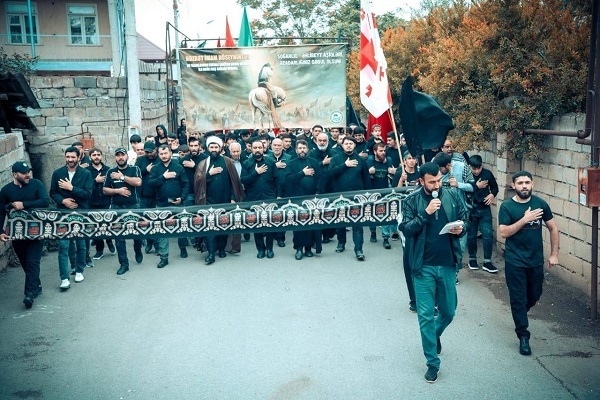
There was also the use of revolutionary symbols and anti-Zionist slogans, as well as the strengthening of Shia identity among the Georgian Shia community and resident Iranians.
The mourning ceremonies for the month of Muharram this year were held in Georgia with unprecedented splendor and unique features.
These rituals, which were held in various cities in Georgia, including Tbilisi, Marneuli, Soganlyq, and the Muslim-populated border areas adjacent to the Republic of Azerbaijan and Armenia, demonstrate the depth of devotion of Shias and lovers of Ahl-ul-Bayt (AS) in this region.
Highlights of this year’s ceremonies:
1. Prominent presence of revolutionary symbols:
This year’s ceremonies featured extensive use of images of the Leader of the Islamic Revolution and banners and placards condemning the Zionist regime and the United States, a clear contrast to previous years. The mourners, holding flags emblazoned with Ashura slogans, demonstrated the unbreakable bond between the Imam Hussein (AS) uprising and the resistance front.
2. Geographical scope of the ceremonies:
Unlike previous years, when the ceremonies were mainly concentrated in Tbilisi, this year we witnessed Muharram mourning ceremonies being held in several cities in Georgia:
- Tbilisi: The main ceremony was held at the Iranian Husseiniyeh in Tbilisi, with a large number of mourners in attendance.
- Marneuli and Souganlik: These cities, which have a larger Shia population, hosted more passionate ceremonies
- Border regions: Mosques in border regions with the Republic of Azerbaijan and Armenia also witnessed Muharram mourning ceremonies.
Special programs for Tasua and Ashura in Georgia
Ashura procession:
During the days of Tasua and Ashura, the mourners of Imam Hussein (AS) kept alive the memory of Imam Hussein’s (AS) epic by organizing large processions. These processions were accompanied by lamentations and chest beating, and created a special spiritual atmosphere in the cities of Georgia.
Special ceremonies:
- Quran recitation and recitation of the Ashura Supplication: Like in other parts of the world, these fixed programs were performed in all ceremonies
- Religious speeches: with emphasis on the political and social messages of Ashura
- Elegy and lamentations
Read More:
Iranians living in Georgia and lovers of Ahl-ul-Bayt (AS) in Tbilisi mourned in large numbers at the Iranian Husseiniyeh. Reports indicate that the attendance of Georgian Shias and Iranians at the ceremonies was more impressive than in previous years.
The holding of Muharram rituals in Georgia with its unique features this year indicates several important facts:
1. The quantitative and qualitative growth of the ceremonies: geographical expansion and an increase in the number of participants
2. The connection between Ashura and the resistance front: using revolutionary symbols and anti-Zionist slogans
3. Strengthening Shia identity among the Georgian Shia community and Iranians living in the country
The Muharram mourning ceremonies can be analyzed not only as a religious ritual, but also as a demonstration of the unity of the Shias and their devotion to Ahl-ul-Bayt (AS) and the Islamic system of Iran. The features of this year's ceremonies have made Muharram 1447 in Georgia a distinctive and memorable event.
Below are pictures of the mourning ceremonies of the month of Muharram 1447 AH with the presence of Georgian Muslims:
4293362



